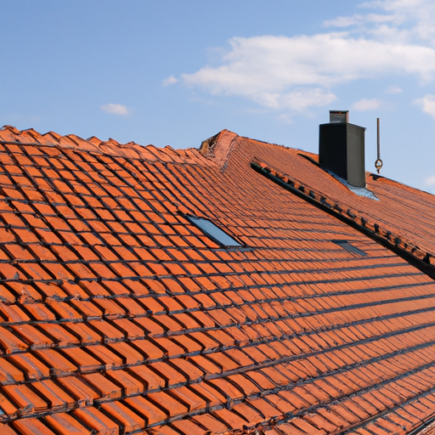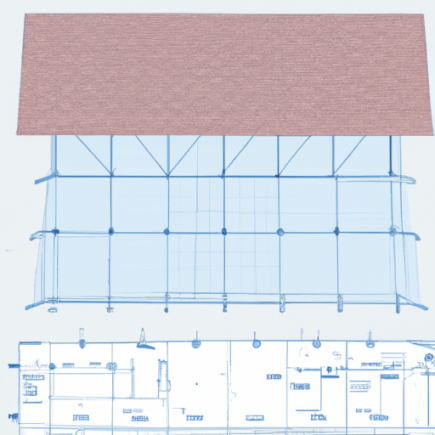Understanding the basics of roof construction is crucial for anyone considering building or remodeling a home. This step-by-step guide covers key aspects such as determining the pitch or slope of the roof, installing roof trusses or rafters, placing the roof decking, and applying the underlayment. The final step is the installation of the roof covering, which includes various options like asphalt shingles, metal roofing, clay or concrete tiles, and wooden shakes. By following these guidelines and seeking professional advice, you can ensure a well-constructed roof that provides optimal protection for your property. In a separate article, we delve into a comprehensive overview of common roofing materials and techniques, allowing you to make informed decisions during the construction or remodeling process.
Essential Steps for Successful Roof Construction: A Comprehensive Guide
Constructing a roof requires careful planning and execution. This comprehensive guide highlights key factors to consider, such as design and architecture, choice of roofing materials, structural integrity, proper ventilation, skilled labor, and regular maintenance. It emphasizes the importance of considering factors like slope, size, and shape of the roof in the design process. The guide also stresses the need for selecting appropriate roofing materials based on durability, weather resistance, and budget, and engaging qualified professionals. Additionally, it emphasizes the significance of a strong and stable roof structure, proper ventilation, and regular maintenance for the roof’s longevity and optimal performance. By following these key factors and essential steps, readers can confidently embark on successful roof construction projects.
A Comprehensive Guide to Roof Construction: Types, Materials, and Installation Techniques
Roof Construction 101: A Guide to Types, Materials, and Installation Techniques is a comprehensive guide that covers the essentials of roof construction. It discusses the different types of roofs, including gable, hip, flat, gambrel, and shed roofs, highlighting their unique characteristics and advantages. The article also delves into the various materials used in roof construction, such as asphalt shingles, metal roofing, clay or concrete tiles, slate, and wood shakes, outlining their qualities and suitability for different circumstances. Additionally, the guide explains the importance of proper installation techniques, emphasizing the need for skilled professionals who follow industry-standard practices. Overall, this informative article is a valuable resource for anyone looking to gain insights into roof construction and make informed decisions regarding their own roofing needs.
The Basics of Roof Construction: A Comprehensive Guide
Understanding the key elements of roof construction is crucial for anyone involved in the building or renovation process. This in-depth guide delves into the primary components that make up a roof and their importance in the construction process. It covers topics such as roofing materials, roof truss systems, sheathing, insulation, ventilation, flashing, and drainage systems. Each element is examined in detail, including their functions, installation requirements, and impact on the overall structural integrity and longevity of the roof. Whether you are a builder, homeowner, or architect, this guide provides valuable information to ensure a well-built and long-lasting roof.
The Essential Guide to Roof Construction: Materials, Techniques, and Maintenance
In the world of construction, understanding the essentials of roof construction is crucial for architects, contractors, and homeowners alike. This comprehensive guide explores materials, techniques, and maintenance of roof construction, providing valuable insights for informed decision-making. The choice of materials, such as asphalt shingles, metal roofing, tiles, slate, and wood shingles, impacts durability, insulation, cost, and appearance. Techniques like roof framing, underlayment, flashing, gutter installation, and proper ventilation optimize the structural integrity and performance of roofs. Regular inspections, cleaning, gutter maintenance, and tree trimming are essential maintenance practices to ensure the longevity and performance of roofs.
The Art and Science of Roof Construction: Exploring the Key Factors for a Strong and Durable Roof
Understanding the anatomy of a strong roof is essential for constructing a durable and long-lasting building. This article highlights the key factors that contribute to a strong roof, including the roof deck, underlayment, roofing materials, flashing, ventilation, and slope. Each component plays a crucial role in protecting the structure from external elements and preventing water damage. By understanding these fundamentals, one can ensure the reliability and longevity of their roof. Additionally, selecting the right materials and construction methods is vital for building a roof that can withstand the test of time.
Headlines play a crucial role in grabbing readers’ attention and enticing them to read the full article, and crafting effective headlines is essential for maximizing reach and engagement. When creating headlines, it’s important to accurately reflect the main idea of the article and incorporate relevant keywords for search engine optimization. Headlines should also be concise and attention-grabbing, using strong words or promising solutions. Adding numbers or statistics can increase clickability. Headline optimization is an ongoing process, and analyzing performance metrics can refine future headlines. In summary, headlines are a powerful tool for capturing attention and driving traffic to articles, and by optimizing them, writers and marketers can increase the likelihood of their content being noticed and read by a wider audience.
– Roof Construction Explained: From Design to Installation
Understanding roof construction is essential for anyone involved in building projects or home renovations. This comprehensive guide takes you through the entire process, from design to installation. The first step is the design phase, where factors like building type, climate, desired pitch, and materials are considered. The next step is the roof framing, where the underlying structure is created using trusses for stability. Then, the roof covering is installed, with options like shingles, tiles, or metal sheets. Finally, roof flashings and accessories are added for water protection. Throughout the construction process, safety measures must be followed. By following these steps, you can achieve a well-built and durable roof that protects your structure for years to come.
The Latest Innovations in Roof Construction: Advancements and Best Practices
Roof construction has undergone significant transformations in recent years due to advancements in technology and innovation. Eco-friendly roofing solutions, made from recycled or recyclable materials, are becoming increasingly popular, reducing waste and minimizing the carbon footprint of buildings. The use of drone technology for roof inspections and measurements has improved accuracy and safety, while lightweight and flexible roofing membranes have simplified installation processes and improved durability. Integration of smart technologies and sensors allows for real-time monitoring and proactive maintenance. These innovations offer improved durability, enhanced energy efficiency, and cost savings, making it essential for professionals to stay updated and adopt best practices in order to construct high-quality and sustainable roofs.
Advanced Techniques in Roof Construction: Innovations and Best Practices
In the article „Innovations in Roof Construction: Advancements Revolutionizing the Industry,” the author highlights several groundbreaking techniques that are transforming the way roofs are constructed. These include the use of green roofing systems, which not only improve air quality and energy efficiency but also reduce the urban heat island effect. The integration of solar panels into roofs is another exciting advancement, providing renewable energy sources and contributing to carbon emissions reduction. Sustainable and eco-friendly roofing materials, such as metal roofing and recycled shingles, are gaining popularity due to their durability and insulation properties. Additionally, innovative installation methods, such as drone roof inspections and the use of prefabricated components, are streamlining the construction process, improving safety, and ensuring precise construction. Overall, advancements in roof construction techniques are revolutionizing the industry and enhancing both the functionality and environmental impact of roofs.












